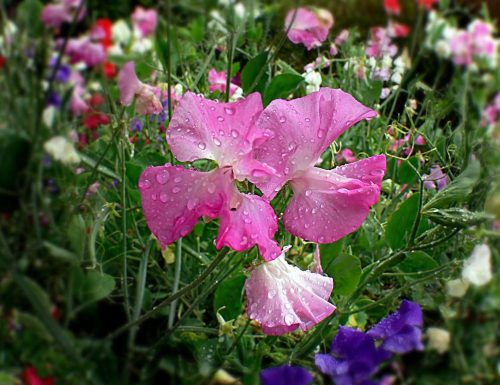Sweet peas do well in the ornamental garden but also in the vegetable garden.
Related to:
Everlasting p
You are viewing the mobile-adapted version of the page.
The one for tablets, laptop and desktop also provides general information, such as origin, toxicity and cultivation.

- Sweet p
ea is very poisonous, especially the seeds; cut off any pods to avoid mistaking them for the edible pods of the common p ea.
Sweet peas – (Lathyrus odoratus) also do well in the vegetable garden: both fragrant annuals and perennials – the everlasting p
Bugs
Eaten young peas: pea moth (Laspeyresia nigricana) or pea weevil (Bruchus pisorum).
Fungi & diseases
Brown spots with gray fungus: gray mold.
Plant wilts and leaves turn yellow on one side. White (sometimes pink) mold develops on stem and tendrils: Fusarium wilt (Fusarium oxysporum).
